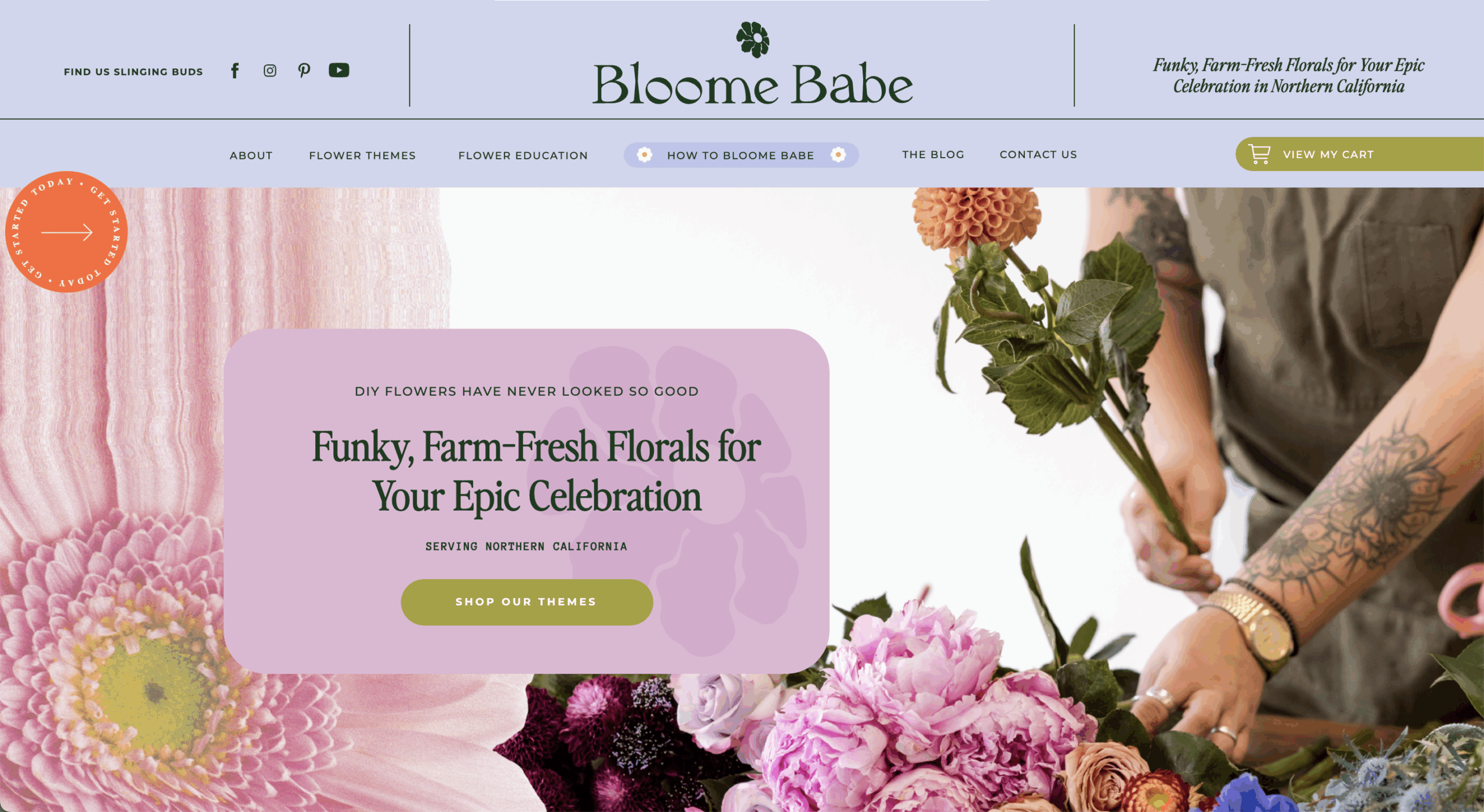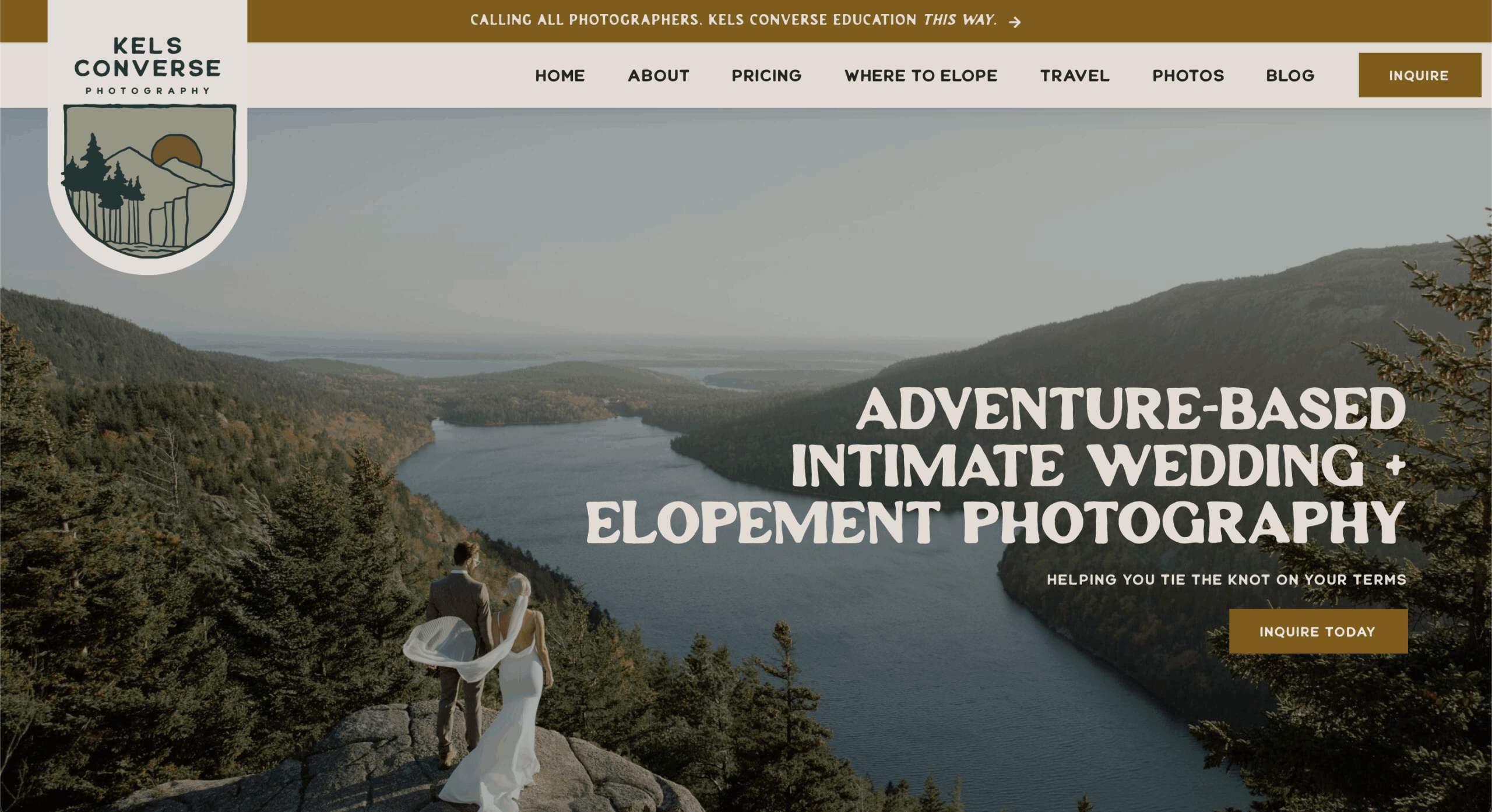
Sure, your website looks pretty, but design alone isn’t what convinces someone to work with you. The words on your site are just as important (if not more, tbh), which is why learning a few website copywriting tips can make such a big difference.
When done well, your copy creates clarity, builds trust, and makes it easy for the right clients to say heck yes. And the good news? Writing strong website copy doesn’t have to be complicated. With a few simple strategies, you can make your site more engaging and more effective.
Here are my top ten website copywriting tips you can start using right away:
1. Write With Your Ideal Client In Mind
If you’re looking for one thing to take away from all of my website copywriting tips, it’s this one. When you’re writing for “everyone,” you’re really writing for no one. Strong copy always starts with knowing exactly who you’re talking to.
What do they need? What’s frustrating them? What words do they actually use when they talk about those struggles?
Example:
“I help small business owners with marketing” vs. “I help wedding photographers book dream clients without spending all day on Instagram.“
See the difference? The first statement is extemely generic and really won’t grab the attention of anyone—small business owner or not. But the second statement … that one speaks directly to the person you’re trying to attract.
If you need help figuring out who your ideal client even is, I’ve got a freebie for that! Check out my Ideal Client Avatar Worksheet here!
2. Nail Your Above-The-Fold Message
The section at the top of your homepage—often called “above the fold”—is the first thing people see. In just a few seconds, visitors should be able to tell:
- Who you are
- What you do
- Who you do it for
If they have to scroll or click to figure that out, then you’ve already lost them. Keep it simple, keep it clear, and let personality show through once clarity is nailed down.
3. Keep It Conversational
Many business owners think their website needs to sound formal, but that often leads to stiff or overly technical writing. The most effective copy feels natural, like you’re having a conversation with your reader.
A good rule of thumb? Read your copy out loud. If it feels clunky or unnatural, go ahead and rewrite it until it sounds like something you’d actually say.
4. Make Every Section Count
Every part of your site should guide the reader toward a deeper understanding of your work or a next step they can take. If a paragraph, headline, or button doesn’t serve a clear purpose, then it’s probably safe to remove it.
Strong copy doesn’t mean more words—it means the right words in the right places.
5. Highlight Benefits, Not Just Features
It’s important to list what you offer, but even more important to explain why it matters. Features tell people what you do. Benefits show them how their life or business will be better after working with you.
For example: instead of “I offer brand photography,” try “I capture photos that make your brand feel approachable and professional, so your clients know they can trust you.”
Benefits help people picture the transformation you provide.
6. Clarity > Cleverness
Creative headlines and wordplay can add personality, but never at the expense of clarity. Visitors should be able to understand what you do within seconds.
So here’s a simple test: if someone new to your industry landed on your site, would they quickly “get it”? If not, it’s time to simplify that message.
7. Sprinkle CTAs Throughout Each Page
Calls-to-action (CTAs) shouldn’t only live at the very end of a page. Sprinkle them throughout so people don’t have to scroll forever to take the next step.
And please, don’t make every single button say “Learn more.” It gets really boring really fast, and doesn’t entice anyone to actually, well, learn more.
Use action-oriented, specific CTAs like:
- “Book your copy audit”
- “Grab your free guide”
- “Plan your dream wedding”
Think about what action you want someone to take, then make it easy for them to do it.
8. Format For Skimmability
Your website visitors? I hate to tell you this because SO MUCH goes into writing copy, but they’re skimmers. Hardly anyone is reading every single word on your website, so you’ve got to meet them where they are.
Make it easy for them to get all the needed info by:
- Breaking up long paragraphs
- Using subheads to guide them down the page
- Adding bullet points (like this one!)
- Bold key phrases so the important stuff stands out
Design might draw them in, but formatting is what keeps them from bouncing off your site.
9. Use SEO, But Don’t Make It Obvious
Yes, keywords matter—but keyword stuffing doesn’t.
The trick? Weave SEO into your copy naturally.
- Use your main keyword in the headline, intro, and conclusion.
- Sprinkle in related phrases where it makes sense.
- Always write for humans first, algorithms second.
Because if your copy connects, people will stay longer, click around more, and Google will definitely notice. And yes, this even applies when you’re writing posts like this one filled with website copywriting tips.
10. Close With Connection + Direction
When someone reaches the end of a page, they should feel two things: connected to you and clear on what to do next.
Close with a message that reinforces the value of your work and a direct invitation to take the next step—whether that’s booking, inquiring, or downloading a resource.
Your Quick DIY Checklist
Want to give your own site a mini-audit? Ask yourself:
- Do I clearly say who I am, what I do, and who it’s for—above the fold?
- Am I writing for my ideal client, not my peers?
- Do I have CTAs throughout the page, not just at the end?
- Is my copy easy to skim?
- Does my voice actually sound like me?
If you answered “no” to any of those, you’ve got some tweaks to make. And if you want a pro to review your site and provide real, actionable guidance that can improve your copy stat, learn more about my Website Copy Audit!
Final Thoughts
At the end of the day, your website copy doesn’t need to be complicated or have you crying in front of your computer screen. It just needs to do three things really well:
- Be clear about what you do and who you serve.
- Build trust by showing that you understand your client’s needs.
- Guide people toward taking action with confidence.
When your words do those three things, your design becomes more than just “pretty.” It becomes purposeful.
And he best part? You don’t have to overhaul everything at once. Even small changes, like rewriting a headline for clarity, adding a more specific call-to-action, or shifting a feature into a benefit, can make a noticeable difference in how your site connects with people. These small but impactful adjustments are some of the most practical website copywriting tips you can apply right away.
And if you’re ready to go beyond “fine for now” and finally have copy that reflects who you are and sells what you do …
Here’s How I Can Help
Check out my website copywriting services. I write website copy, sales pages, blog posts, and brand messaging guides for entrepreneuers, and I would love for you to be one of them!
Subscribe to my newsletter! Every week I send out The Byline, my copywriting newsletter filled with actionable tips, musings, my current hyperfixations (iykyk), and client websites that deserve a moment in the spotlight.
Learn how to write a services page that sells. With my absolutely FREE Notion dashboard, I’ll walk you through everything you need to know to write a freaking amazing services page for your website, all on your own.
Grab your free pre-launch checklist. Get instant access to my free Notion checklist that tells you exactly what you need on each core page of your website, so you can be sure you’re not missing anything important before you send your site out into the world.
Read the rest of my blog. There’s always more learning to be done! Keep growing your website copywriting knowledge and find posts that expand on these website copywriting tips with advice about copy x design, how to know when to bring in a pro, and so much more.




Read the Comments +